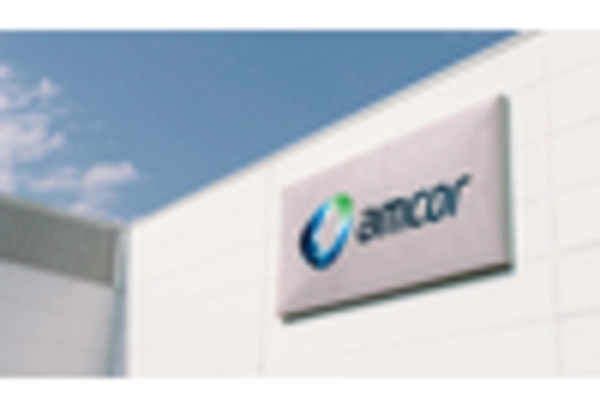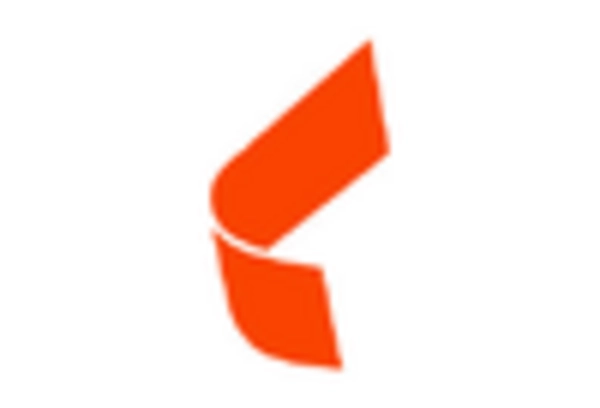E-commerce Adaptation
The Alcoholic Beverage Packaging Market is experiencing a notable transformation due to the rise of e-commerce. As online sales of alcoholic beverages continue to expand, packaging solutions must adapt to ensure product safety and integrity during transit. This adaptation includes the development of tamper-proof seals and protective packaging that minimizes breakage. Data indicates that e-commerce sales in the alcoholic beverage sector have surged, with a projected increase of 20% annually. Consequently, manufacturers are focusing on creating packaging that not only appeals to consumers but also withstands the rigors of shipping. This trend highlights the importance of innovative packaging designs that cater to the unique challenges posed by online retail, ultimately shaping the future of the Alcoholic Beverage Packaging Market.
Regulatory Compliance
Regulatory compliance is a significant driver in the Alcoholic Beverage Packaging Market, as manufacturers must adhere to stringent guidelines regarding labeling, safety, and environmental impact. Governments worldwide are implementing regulations that dictate packaging materials and practices, necessitating that companies stay informed and compliant. This compliance often requires investment in research and development to ensure that packaging meets legal standards while also appealing to consumers. For instance, regulations concerning the use of certain chemicals in packaging materials are becoming more stringent, pushing manufacturers to explore safer alternatives. Additionally, compliance with recycling and waste management regulations is increasingly important as sustainability becomes a priority. As a result, companies that proactively address regulatory requirements are likely to enhance their reputation and market position within the Alcoholic Beverage Packaging Market.
Premium Packaging Trends
The Alcoholic Beverage Packaging Market is witnessing a shift towards premium packaging trends, driven by consumer preferences for high-quality products. As consumers increasingly seek unique and luxurious experiences, brands are investing in sophisticated packaging designs that enhance product appeal. This trend is particularly evident in the spirits segment, where premium packaging can significantly influence purchasing decisions. Research suggests that products with premium packaging can command higher price points, leading to increased profit margins for manufacturers. Additionally, the use of high-end materials, intricate designs, and personalized labels is becoming more prevalent. This focus on premium packaging not only elevates brand perception but also aligns with the growing trend of gifting alcoholic beverages, further propelling the Alcoholic Beverage Packaging Market.
Sustainability Initiatives
The Alcoholic Beverage Packaging Market is increasingly influenced by sustainability initiatives. Consumers are becoming more environmentally conscious, prompting manufacturers to adopt eco-friendly packaging solutions. This shift is evident in the rising demand for recyclable materials and biodegradable options. According to recent data, the market for sustainable packaging is projected to grow significantly, with a compound annual growth rate of over 10% in the coming years. Companies are investing in innovative materials that reduce carbon footprints, such as plant-based plastics and recycled glass. This trend not only meets consumer expectations but also aligns with regulatory pressures aimed at reducing waste. As a result, brands that prioritize sustainability in their packaging strategies are likely to gain a competitive edge in the Alcoholic Beverage Packaging Market.
Technological Advancements
Technological advancements are playing a crucial role in shaping the Alcoholic Beverage Packaging Market. Innovations in packaging technology, such as smart packaging and automation, are enhancing efficiency and consumer engagement. Smart packaging solutions, which incorporate QR codes and NFC technology, allow consumers to access product information and promotions easily. This interactivity is becoming increasingly important as consumers seek more information about the products they purchase. Furthermore, automation in packaging processes is streamlining production, reducing costs, and improving consistency. Data indicates that the adoption of automated packaging solutions is expected to rise, with many manufacturers investing in advanced machinery to meet growing demand. These technological advancements not only improve operational efficiency but also enhance the overall consumer experience within the Alcoholic Beverage Packaging Market.


















Leave a Comment